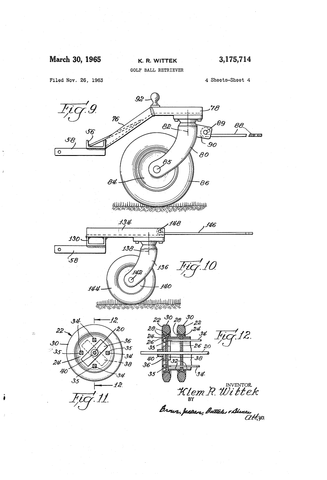
Imagine a time when every golf ball on a driving range had to be collected by hand. This laborious task was the norm in the early days of golf, highlighting a significant chapter in golf ball history. Today, we take a journey through the evolution of golf ball retrieval, from manual labor to sophisticated machinery.
The Dawn of Mechanical Golf Ball Retrieval

The first major leap in the evolution of golf ball retrieval came with a groundbreaking invention in September 1944. An inventor named Mr. Martin E. Fonken was awarded the first patent for a golf ball collecting machine. His invention was designed to alleviate the tedium of manually collecting golf balls on driving ranges. The patent application vividly described the need for this innovation: "My present invention relates to means for retrieving golf balls or similar objects from the ground or other surfaces...it is therefore a main object of this invention to facilitate retrieving of objects such as golf balls scattered on the ground by providing mechanical means which, when drawn over the ground, automatically retrieves the balls and deposits them in a receptacle."
Klem R. Wittek's Enhancements in 1965

The next significant development in golf ball retrieval device technology came in March of 1965. Klem R. Wittek made notable improvements to the design, including adding a front wheel to the retriever. His objectives were clear: to provide an improved structure for pushing the retriever over the ground, ensuring the pushing vehicle could follow closely for better visibility and efficiency. Wittek's design also included a hopper or basket for collecting the golf balls and an adjustable frame to optimize pick-up efficiency and prevent damage to the ground.
William Pohl's Innovation: The "No Front Wheel" Picker
In June of 1978, William Pohl, an engineering graduate from Cal Poly San Luis Obispo and an avid golfer, introduced a revolutionary design - the first "No Front Wheel" golf ball picker. This innovation addressed the limitations of previous models, allowing for sharper turns, reverse movements, and better maneuverability without harming the range grasses. Pohl's design marked a significant milestone in the evolution of golf ball collecting tools.
The Legacy of These Innovations
The designs and technologies introduced by Fonken, Wittek, and Pohl have stood the test of time, influencing countless driving ranges worldwide. Their contributions laid the foundation for the modern golf ball retriever, blending golf ball innovations with practical functionality.
Conclusion
The evolution of golf ball retrieval devices reflects not just a historical perspective but also a story of human ingenuity and technological advancement. From tedious manual collection to sophisticated machinery, the journey of golf ball collecting tools mirrors the broader narrative of progress in golf ball technology. As we continue to witness advancements in this field, we pay homage to the pioneers who transformed a simple task into a testament to innovation and efficiency.


